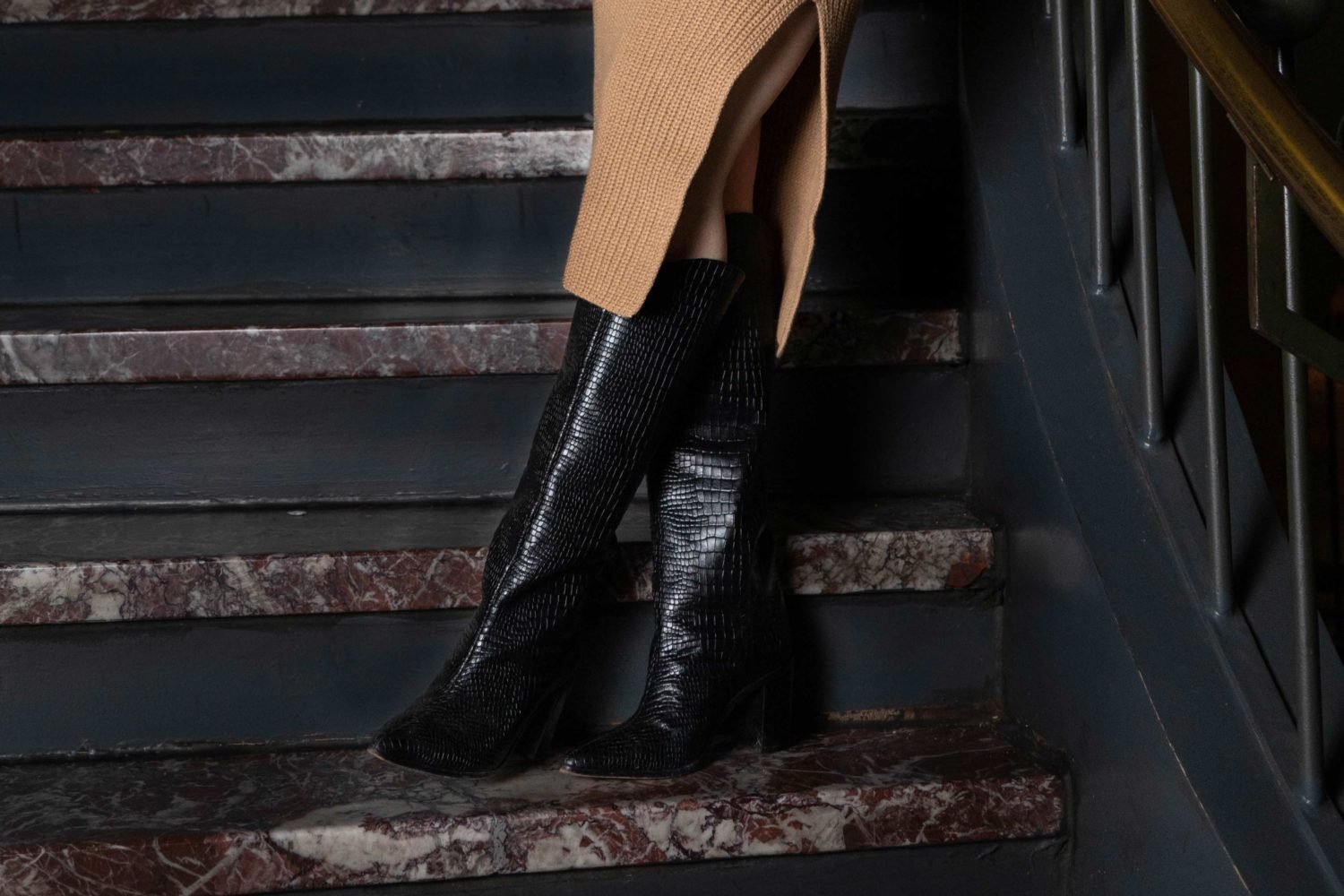Washingtonian Great Hair > Making Thinning Hair Thicker
The maxim that you can never be too thin doesn't apply to hair. Thinning hair is a concern for both men and women, who often equate losing their locks with losing their looks.
"I'm seeing more young women who are worried about thinning hair," says Amy Cordaro, whose Amy of Denmark in Wheaton is a leading source of hairpieces and wigs. Although many of her clients are dealing with temporary hair loss caused by cancer treatment, an increasing number of healthy women come in to cover what used to be called "male pattern baldness."
More than 50 million American men and 30 million women experience some hair loss as they age, according to the American Academy of Dermatology. Today more women are doing something about it.
Androgenetic alopecia–hair loss–is hereditary and shows up differently in men and women. Men tend to lose hair at the crown and temples; women's hair generally thins at the front, sides, and crown. Men get bald; women rarely do.
If you are seeing more hair in your brush and less on your head, take heart. There are new tools and tricks to promote hair growth or make what you have look thicker.
This Little Light of Mine
The HairMax LaserComb is a hand-held device that uses a low-level laser to stimulate hair growth. You shine the red light on your hair, moving it every few seconds until you've "combed" your whole head. Using the device for 10 to 15 minutes three times a week is supposed to increase circulation in the scalp and stimulate hair follicles to make strands stronger.
According to an article in the International Journal of Cosmetic Surgery and Aesthetic Dermatology, some patients lost hair during the first few weeks of using the laser comb. But after six months of use, subjects had increased hair counts and healthier hair.
I tried it. The laser did not generate heat–if not for the red light and the beep, I would have thought it wasn't on.
At first, I noticed that my hair seemed to grow faster. Less hair danced in my shower drain. After a few months, my stylist said that my hair was thicker on top. I'm still no mop-top, but the results keep me combing.
The makers of the LaserComb don't claim to grow new hair but to enhance the quality of the hair you have. Some hair-loss clinics are combining laser therapy with hair-loss treatments like Rogaine and Propecia.
The HairMax LaserComb costs $645 and is available from Lexington International, 866-527-3726 or hairmax.com.
Extensions: You, Too,
Can Have Hollywood Hair
Extensions are hanks of hair attached to your own hair to add length or body. An extension, which is made from 20 to 50 strands of real hair, is glued to your hair about one-quarter to one-half inch from the scalp.
"Extensions make hair thicker, add body to straight hair, and can smooth wavy hair," says David Cohen of David's Beautiful People in Rockville, one of the first salons in the Washington area to do extensions. Selecting different shades can provide lowlights or highlights without dying your hair.
Extensions are part of your hair and are washed and styled as if you grew them yourself.
Extensions involve a sizable investment in time and money to maintain. Putting them in costs $500 and up. They last three to four months before the natural hair grows so much that they need to be removed and repositioned–a process that can take up to seven hours. Some women prefer to come in every few weeks to remove a few and add a few new ones so that they never need a full head of extensions at one sitting, Cohen says.
The hair that the extension is attached to can become matted and must be combed carefully. "If your hair is long, you need to put it into a scrunchie at night to prevent excessive pulling and tangles," Cohen says.
Hair to Go
Forget the rugs that sat atop heads like misplaced Chia Pets. The latest hairpieces are lighter in weight and more likely to be made with real hair that matches your original texture. In the past, most toupees used Asian hair, which is thicker and straighter than non-Asian hair.
Men's toupees–now called hair systems–are more likely to be glued into place. The wearer has to shave the area to be covered, something few women are willing to do. Toupees must be removed monthly to be washed and styled–and to check the health of the skin underneath.
A hairpiece to cover the crown can cost $300 and up; a good custom-made wig made of real hair will be at least $1,000.
A Little Off The Back:
Micro-Hair Transplants
Men with hair transplants used to have a distinctive look: Lines of hair tufts marched in precision across their scalps.
These tufts were plugs of hair that were punched out of the back of the head, the way a cookie cutter bites into dough, and relocated to the crown or forehead.
The theory was sound: Hair from the back of the head is not sensitive to the hormone that causes hair loss, even after it is transplanted. But early transplants did not look natural.
Surgical advances now enable doctors to re-create a natural hairline, says Dr. Steven Hopping, a cosmetic surgeon who is board-certified by the American Board of Hair Restoration Surgery.
First, a small horizontal section of scalp is cut out, usually at the back of the head where the hair is thickest. Because the surgery leaves a scar, Hopping suggests that young men who are considering shaving their heads à la Michael Jordan first try the drugs minoxidil (Rogaine) or Propecia.
The harvested strip of scalp is dissected into microscopic pieces so that each graft will have one, two, or three hairs. The doctor makes tiny cuts in the scalp and inserts each graft, positioning it so that the hair will grow in its natural direction.
An average transplant involves at least 1,000 grafts, takes three or four hours, is done under local anesthetic, and costs $8,000 to $10,000. Patients leave without bandages but take antibiotics to prevent infection and medications to lessen swelling. The sutures come out after eight or nine days, and patients can then resume normal activities, like exercise.
The best candidates have thick, healthy hair on the back and sides of their heads and realistic expectations. It takes three or four months before the transplanted follicles start to grow new hair. And the new growth won't replicate the lustrous hair of youth.
Quick Fixes
Not ready for drastic measures? Consider coloring your hair. Permanent color penetrates the hair cuticle, making every strand one-third thicker.
Bernard Portelli of Okyo also advises clients with thinning hair to use dry shampoo to lengthen the time between regular shampooings. "You don't need to wash your hair as often, and the powder creates volume," Portelli says.


















